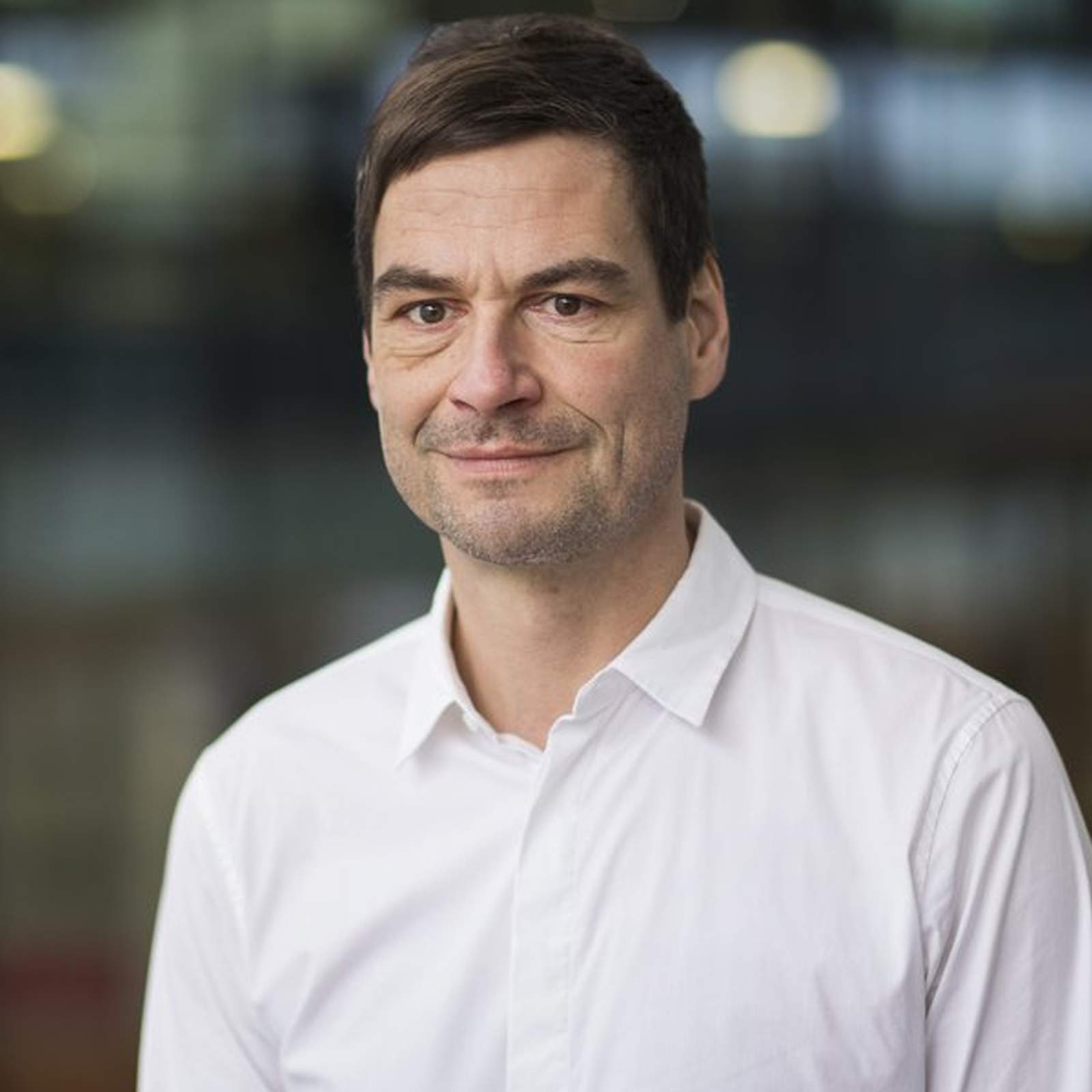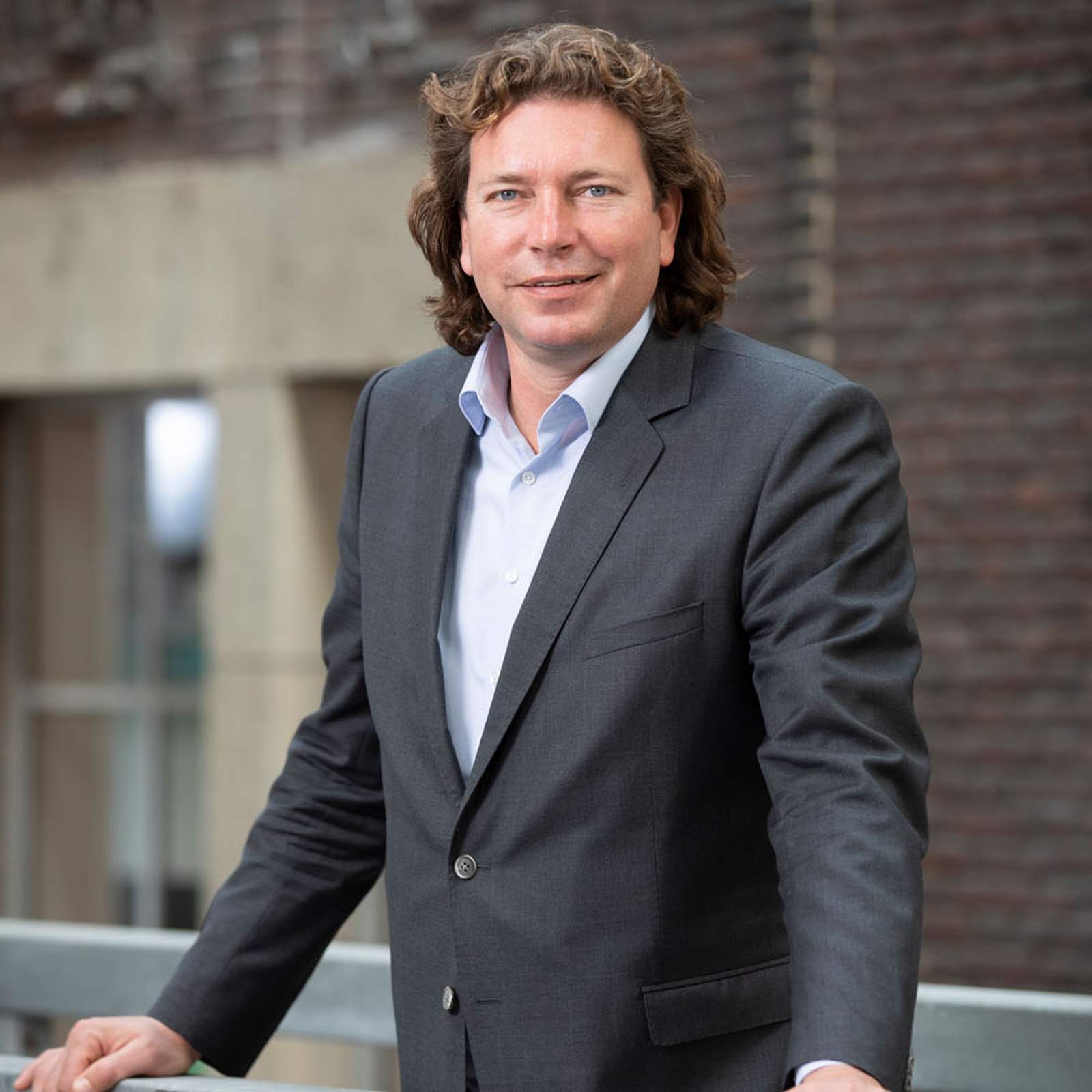A fully circular construction economy by 2050. Are we going to achieve that? t will be difficult, but it starts with good cooperation.
We will not get there just by making materials more sustainable or by stricter regulations. Making construction more sustainable requires fundamental changes in the way that we think and work. Universities and other knowledge institutions are doing a lot of research into circular and sustainable construction. This is how new innovations are brought to life that could eventually have an impact in the market. Recently, 4TU.Built Environment (a partnership between the four universities of technology in the Netherlands) set up a new Domain Acceleration Team (DAT): DAT Circularity & Sustainability.
Heading this team is Torsten Schröder, architect and Assistant Professor of Sustainability in Architectural Design at Eindhoven University of Technology (TU/e). Together with Vincent Gruis, Professor of Housing Management at Delft University of Technology, he explains the goals, expectations and struggles surrounding the transition to the circular construction economy.
Fundamental changes
Schröder: "I see it as my duty to be optimistic and work on solutions that can help and make the circular transition happen. But this does require a radical change in the way we do things. We won't achieve a 100 percent circular building environment just by making buildings more modular or with bio-based materials. We need to fundamentally change the way we design, construct, occupy and reuse buildings." Schröder goes on to explain that you could also consider not even constructing new buildings at all. That way you can stimulate creativity within the sector to tackle this societal problem. "We also need to look at how we can use existing buildings in more efficient ways. A lot of buildings are used for eight hours a day and not at all during the rest of the day. That is something we can do differently. Of course, we should continue to build but there should also be scope for other approaches. That’s really important."
Construction finally recognized as top sector
Gruis and Schröder are pleased that the construction sector is finally being recognized in the National Top Sector policy in place and now also has its own TKI. The start of DAT Circularity and Sustainability comes at a very opportune moment in that regard. "Most research and development efforts in the construction sector have always been separate from the energy transition, climate change or mobility issues," Gruis notes. "The construction sector was never recognized as a top sector in its own right. This has now changed, fortunately.” Schröder adds: "That actually makes perfect sense. The construction sector is essential for this transformation. Of all the industrial sectors, construction has the greatest impact."
Interdisciplinary approach
Within his research projects, Schröder is primarily concerned with translating sustainability and circularity concepts into architectural and urban planning practices. "More specifically, I’m looking into how we can translate the 10R model (Rethink, Redesign, Reduce, Reuse, Repair, Refurbish, Remanufacture, Repurpose, Recycle and Recover, ed.) of the circular economy into architectural design," Schröder explains. "At the moment, for example, students are busy working on design in areas concerning reuse. And with yet another group, I am working on designing buildings with biodegradable materials. My work focuses on identifying new opportunities, innovative designs and maximizing impact." It's a complex world, according to Schröder. Which is why he adopts an interdisciplinary approach that draws on Science and Technology Studies (STS). "In doing that, I look in particular at shaping design challenges, how knowledge is shaped, how design strategies are devised and how conflicts are resolved in design in practice," Schröder clarifies.
Conflicts
These kinds of conflicts arise, for example, when different disciplines have conflicting interests. "A typical conflict is the clash between what architects want and what building services engineers want in a project. Architects often want large surfaces of windows with great views but, from a building services point of view, this is problematic because this causes a lot of solar gains, which then require more cooling as a consequence." It is just one example of the many conflicts that can crop up in practice. Each of the disciplines is involved in different ways and has different sets of responsibilities. As for resolving those conflicts, Schröder notes that: "It is very important to look at the context, as sustainability and circularity are very context-specific. Which arguments carry the most weight within these frameworks? We look at what the priorities are for each project, who is involved and how we can maximize impact."
Develop and improve the housing stock
Gruis is busy working on circularity and sustainability in a slightly different form in the construction sector: "We are crafting knowledge that can help develop and improve our housing stock. We mainly focus on existing buildings but, of course, we also hope to do a few things with new buildings. In the process, we also pay close attention to how we can make homes more circular." According to Gruis, maintenance and renovation work already contribute to the circularity of homes in their own way because products that are used tend to last much longer. But he believes the work itself can also be done in a circular way. “If you replace window frames, certain elements can perhaps be reused. Or maybe it is possible to use bio-based materials. Consider wood instead of aluminum, for starters. Also, that kind of window frame can be put together in such a way that it can be easily disassembled. That makes it more likely that it will be reused."
When asked about his definition of circularity and sustainability, Gruis states: "At the most fundamental level, circularity to me is a means of becoming more sustainable. Ultimately, we all want fewer harmful emissions and waste. And we want to drive down the depletion of natural resources. The goals of circularity all serve to create a better and healthier environment. Ideally, we want to do this in a way that is economically feasible. Circularity can therefore be seen above all as a strategy."
Teams in the transition
Gruis and Schröder are both members of special teams that aim to help advance the transition to a more circular construction economy. The 4TU.BE DAT Circularity and Sustainability team mentioned earlier has only just started out. "We are still at the stage where we are busy determining our scope," Schröder says. "At least for me, it is extremely important that this matter of urgency is addressed. As universities of technology, we have an obligation to do our part to help accelerate the transition to a more circular and sustainable construction environment."
"Even though this DAT is still relatively new, we aren’t starting completely from scratch," Gruis adds. "We are building on a group (the Building and Technology Innovation Centre, ed.) that has already written a program on design for circular building environments and has helped secure research funding." Gruis and Schröder are not only involved in this DAT but also in TKI Construction and Technology. This Top Consortium for Knowledge and Innovation was formed in summer 2022 stemming from the Building and Technology Innovation Centre (BTIC).
Differences
Schröder elaborates on the difference between the DAT and TKI: "The TKI group is mainly made up of industry partners and TNO. Universities and institutions for applied sciences are also included. This means that their network is complementary to ours. DAT is a bit more focused on universities but in practice, we naturally like to work together to develop and implement the knowledge and innovation programs. One more difference between this and the former BTIC is the latter was mainly concerned with circularity. DAT is concerned with sustainability and circularity and how these concepts are interrelated."
Social dimension
This correlation is key, according to Schröder, and he feels that more attention should be devoted to it. "The social dimension is crucial for sustainability. But in many definitions of circular economy or circular construction, this tends to remain an open question. While it is very clear that all forms of construction and technological innovation always entail a social factor. As such, transitions also have to be fair and just." Examples of such social factors include affordability, civic participation in the design process, comfort, public spaces and well-being. "This includes where materials come from and under what conditions they were fabricated."
Circular Building Economy Transition Team
In addition to the DAT and the TKI, there is the Circular Building Economy Transition Team, which Gruis is chair of. He says, "This is one of four transition teams that was put together at the request of the Dutch national government to promote the transition to a circular society as a whole. In our team are people from across all of industry - people from knowledge institutions, commercial parties, public parties, engineers, architects, etc. The team seeks to advise the government on what it can do to make this transition possible. We also sometimes try to encourage initiatives on the ground.”
Gruis about the mutual collaborations between the different teams: "In practice, it is all a bit more fluid but you could say that the transition team is looking at ways to stimulate and regulate the market. It also looks at the development of knowledge. When it comes to knowledge development, TKI Construction and Technology is an important partner. We are once again partnering up with DAT through the TKI."
Schröder: "The idea is to work together on sustainability and circularity themes. In this respect, we want to develop a long-term vision. This can then be used as input for strategic agendas. But it is also about recognizing and identifying the different areas of expertise within the 4TUs. This is an important precondition to be able to work together in a more efficient way and create opportunities through new joint research projects."
Circular in 2050
As to whether both researchers believe in the establishment of a fully circular building economy by 2050? "In any case, we are confident that we are working on the right things with the right intentions. Needless to say, becoming fully circular is going to be tricky. It's already hard to actually define it, as Torsten pointed out. In the transition team, we don't need to define circularity either, but we do need to make sure that everything we do from 2050 onwards doesn’t lead to more harm and threats to our environment," Gruis says. "The circular strategies that we are now developing must be developed by 2050 to the point that they will not cause any harm to the environment. It's not easy for us to picture that right now."
High mountain
Under the auspices of the transition team, Gruis is currently looking into setting up a 'base camp'. He goes on to explain: "We use this ‘base camp’ as a metaphor. The transition to a circular building economy is, in our view, comparable to climbing a very high mountain that you have never climbed before. Starting from the base camp, we want to figure out what are good and feasible ways to get up that mountain."
According to Gruis, by developing the right kind of knowledge together, the DAT Circularity and Sustainability can make a very valuable contribution to this base camp. "Especially if this advances productive collaboration between the four universities of technology. Each university has a slightly different and consequently complementary area of expertise. If you combine these types of expertise in a good way, then that can definitely contribute to accelerating the transition. I am delighted that the collaboration that we had already started is becoming more or less anchored this way."





